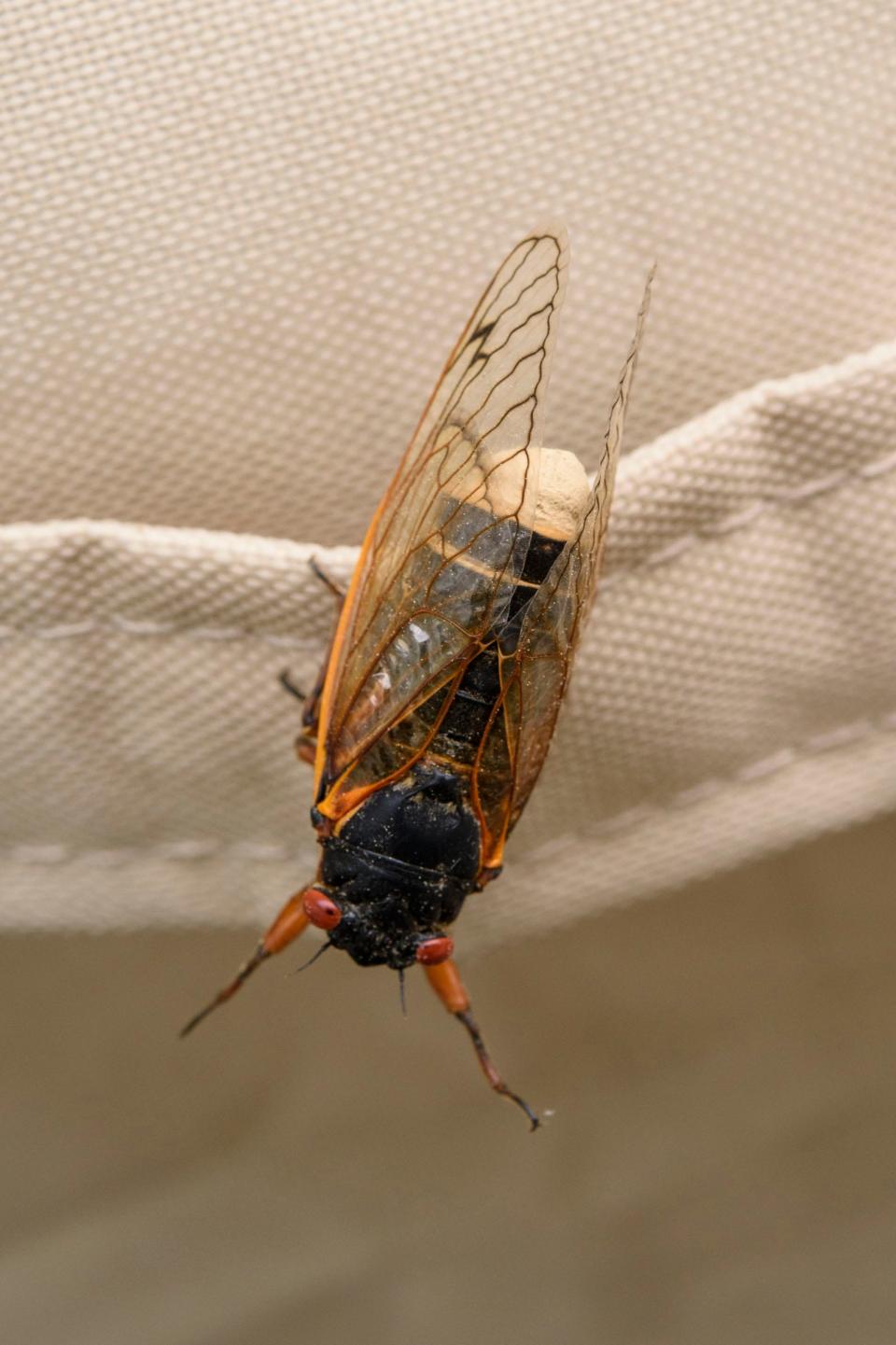What are 'zombie cicadas'? What to know as trillions of cicadas set to emerge this spring
If you’re traveling to any of the Midwestern or Southeastern states this spring, you might encounter zombies — zombie cicadas, that is.
Trillions of cicadas will emerge in May in a double-brood event that hasn’t happened in more than 200 years, according to the U.S. Environmental Protection Agency.
Many of them may become infected with the Massospora fungus that makes them zombie-like, which "modifies their sexual behavior to maximize fungal spore dissemination," according to an article in the National Library of Medicine.
If you’re traveling to any of these states, here’s what you should know about encountering these cicadas:
What states will cicada Brood XIII and Brood XIX emerge?
According to the National Wildlife Federation, periodical cicadas spend most of their lives underground and only emerge after 13 or 17 years. This year, two broods of cicadas will emerge: Brood XIX, located across the Midwest and South, emerges every 13 years, and Brood XIII, located in Midwestern states, emerges every 17 years.
There could be as many as 1.5 million cicadas per acre, which brings the brood population into the trillions.
Expect cicadas in the following states:
Alabama
Arkansas
Georgia
Illinois
Indiana
Iowa
Kentucky
Louisiana
Michigan
Mississippi
Missouri
North Carolina
Oklahoma
South Carolina
Tennessee
Wisconsin
Virginia
How do cicadas become 'zombies'?
The life cycle of "zombie cicadas" begins innocently enough. Like their non-infected counterparts, these cicadas spend years underground, feeding on tree roots. But when they finally emerge above ground, many of these bugs will lose autonomy. According to Scientific American, when infected by the Massospora, they become mere puppets of the fungus, causing them to want to mate frequently.
As the fungus consumes the cicada's abdomen, it compels the insect to engage in bizarre behavior, such as frenzied mating attempts and hyperactive wing flicking — a trait that the male cicadas pick up to attract more mates. These actions serve one purpose: to spread the fungus' spores far and wide, infecting other unsuspecting cicadas hence “zombie cicadas.”

Are cicadas dangerous?
Cicadas aren't dangerous and can actually be beneficial to the environment, according to the Environmental Protection Agency.
Cicadas can provide the following to nature:
Cicadas are a valuable food source for birds and other predators.
Cicadas can aerate lawns and improve water filtration into the ground.
Cicadas add nutrients to the soil as they decompose.
Unless you have a phobia of insects, they won’t bother you. It’s best to leave them alone.
How long do cicadas live?
Once male and female cicadas have mated and the latter has laid its eggs, the insects will die after spending only five weeks above ground, National Geographic reports.
If the weather is consistently warm and dry, the cicadas will finish mating sooner rather than later, which would mean a shorter season. Typically, their lifespan is four to six weeks, and they will start to die off in late June.
In other cases, adult periodical cicadas live for just three to four weeks, according to the Smithsonian Museum of Natural History.
How big are cicadas?
They’re 1 to 2 inches long with a wingspan of 3 to 4 inches.
— USA TODAY contributed to this report.
This article originally appeared on Austin American-Statesman: When will cicadas emerge? Trillions coming, including 'zombie cicadas'

